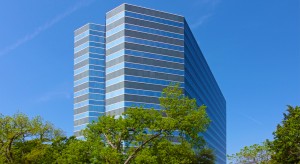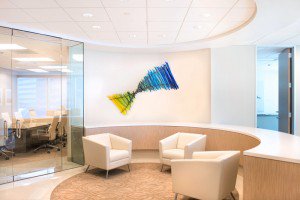Share This
Related Posts
Tags
Property Enhancement
By Yardi Blog Staff on Jun 19, 2014 in News
The real estate environment is in constant evolution, changing and ad apting to accommodate the needs of a diversified pool of customers. To stay on top of the game, investors are constantly looking for the right mix of ingredients to ensure asset performance; more often, it’s a blend of creativity, sustainability and innovation that helps deliver the best results.
apting to accommodate the needs of a diversified pool of customers. To stay on top of the game, investors are constantly looking for the right mix of ingredients to ensure asset performance; more often, it’s a blend of creativity, sustainability and innovation that helps deliver the best results.
Enhancing interiors through art. Parmenter Realty Partners, a real estate investment, management and development company headquartered in Miami, Florida, has found art as a most appropriate means to add color and appeal to their properties. With the help of two local artists and their inspiring creations, Parmenter aims to breathe new life into one of their most recent acquisitions in Dallas, Texas. The lobby of Rambler Park (pictured, right), a 14-story, 310,771-square-foot office building at 7557 Rambler Road, is now home to exquisite artwork installations by Mark Whitmarsh and Carlyn Ray.
“When we acquired this beautiful building, the gallery-like lobby was missing some much needed color,” said Josh Hedderich, Asset Manager for Parmenter Realty Partners. “The addition of the work by artists as talented as Mark and Carlyn adds an upgraded dimension to the building, which we hope will delight and intrigue our tenants.”
Three of Whitmarsh’s pieces are currently on display, including “Fall Thunder,” “Blue Odyssey,” and “Dream Sequence.” The artist is highly appreciated and admired for his abstract expressionistic use of color an d creating high-energy vivid stories on the canvas. He has lived and painted in Dallas for more than 20 years.
d creating high-energy vivid stories on the canvas. He has lived and painted in Dallas for more than 20 years.
Carlyn Ray, a local glass blower and former Dale Chihuly understudy, has created a unique glass weave light sculpture that gives the building’s lobby a contemporary yet relaxing feel. During her two years as an employee for Chihuly, Ray was part of the team responsible for masterpieces which include the unforgettable Chihuly exhibit at the Dallas Arboretum. She later opened her own studio in the Design District in the summer of 2013.
Underscoring Parmenter’s commitment to delivering first-class tenant experience, the company embarked on a renovation project that will see Rambler Park completely revamped. Bearing a $2.4 million price tag, the improvements include six floors of common corridor and restroom upgrades, the creation of a spec suite floor with Wi-Fi tenant lounge, and landscaping upgrades throughout the site. A direct connection to the Walnut Hill DART station, elevator cab upgrades, building top signage installation and submission for LEED certification are expected to be complete by the end of March 2014, according to Parmenter.
Green is here to stay. Reducing carbon footprint has now become a top priority for both consumers and professionals. A building boasting green attributes, be it a multifamily compound or office development, will rank higher on the tenants’ desirability index as sustainable practices, beside promoting environmental responsibility, also translate into lower operating costs for occupiers.
Factors such as the ability of a property to deliver net operating savings, ensure energy efficiency, and facilitate water conservation, are widely recognized as positively influencing the value of an asset. Taking steps to lower a property’s carbon footprint can not only bring costs down, but it can also play a major part in promoting a corporation’s brand and boosting customer appeal while assisting in a more rapid lease-up.
Liberty Property Trust, one of the nation’s leading developers and managers of high-performance office and industrial buildings, has been pursuing LEED certification portfolio-wide. More recently, the company has been awarded LEED Silver for its newly-opened property at 4500 E. Cotton Center Blvd. in Phoenix, Arizona. The two-story outfit is fully leased to Aetna, the diversified insurance and financial services firm.
The 139,403 square-foot Class A office building was built in 2013 and features impressive green design elements. Highlights include sustainable construction materials; highly efficient interior and exterior lighting with low lighting power densities; highly efficient cooling and fan systems; and a building envelop that exhibits windows and insulation that minimizes solar heat.
“The value of these types of systems and designs cannot be understated,” said John DiVall, senior vice president, Liberty Property Trust. “Our average tenant in a LEED or ENERGY STAR® certified building can expect to save 20-30% in energy costs over a traditional office building. Over the course of a lease, that is a very significant figure – one very attractive to many tenants.”
Click here to check out Commercial Property Executive’s 2014 ranking of the Greenest Companies in commercial real estate. Liberty Property Trust came in at No. 2, second only to Hines.
Future prospects. Many of the ideas that were considered unfeasible for a long time have now entered the plausibility realm. Electric cars and net-zero energy buildings, e-commerce that knows no boundaries, smart homes and intelligent thermostats that learn your habits, and even urban rooftop farms, have become a gratifying reality.
In the current context, the idea of a super-smart skyscraper that monitors exactly how much energy-sapping CO² is in the air – perhaps via devices on employees’ wrists – and increases ventilation rates accordingly, does not sound so far-fetched after all. According to Rick Fedrizzi, president, CEO and co-founder of the U.S. Green Building Council, the future looks promising. A special feature on CNBC.com presented some of his bold predictions about the evolution of real estate in the not-so-distant future. In his vision, tomorrow’s high-rise structure will monitor light, energy, water and heat levels and respond by controlling them, increasing efficiency as well as human and environmental health. Fedrizzi envisions agriculture taking over large chunks of urban rooftop real estate, as well.
